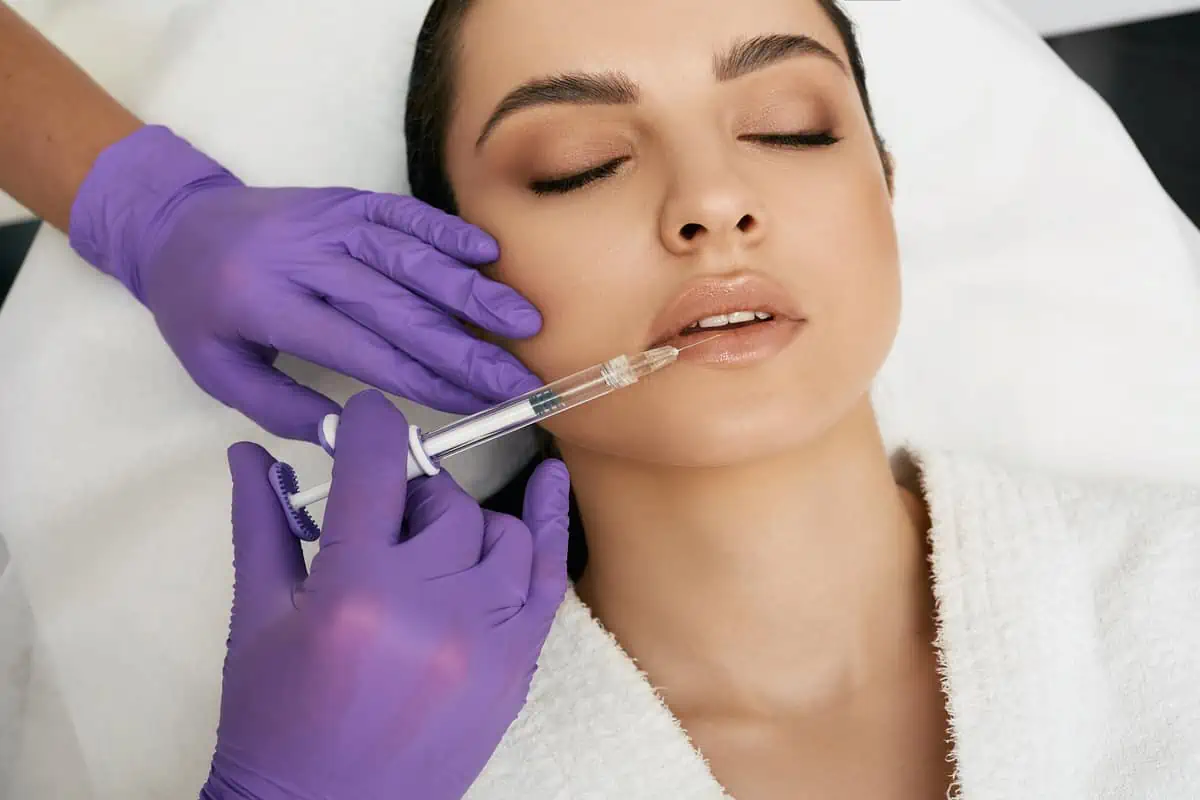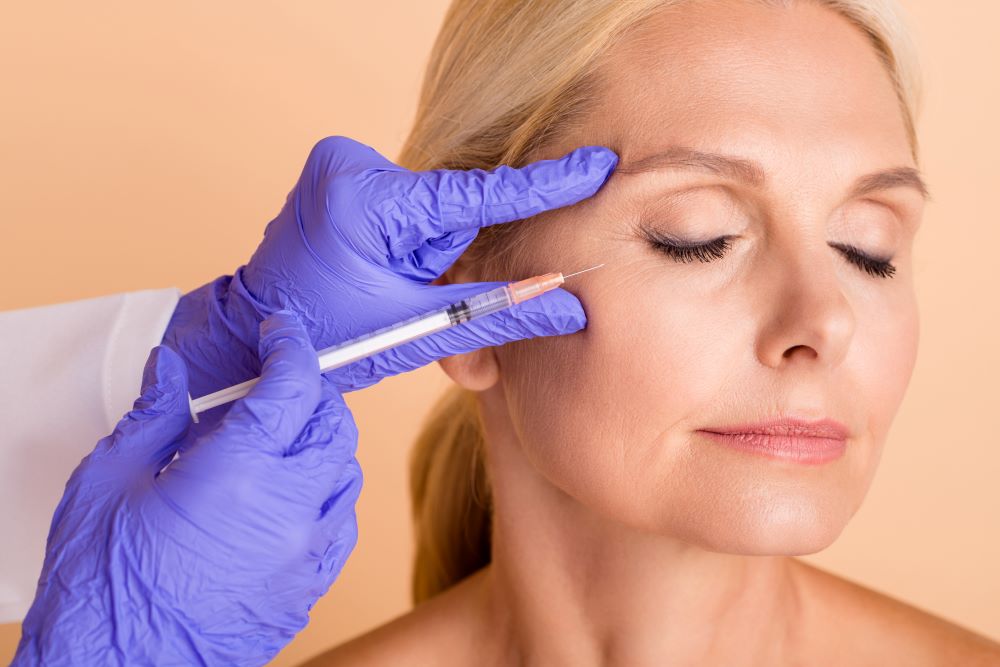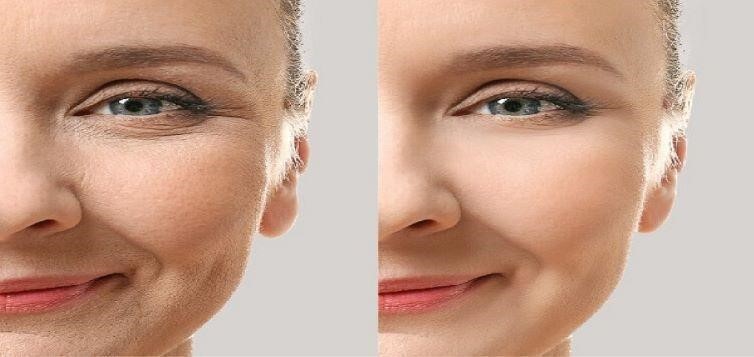The botox mechanism of action reveals a fascinating interplay between science and aesthetics. As a treatment widely recognized for its cosmetic benefits, Botox has gained prominence not only for wrinkle reduction but also for various medical applications. Understanding how Botox works at a molecular level offers insights into its effectiveness and safety profile, illuminating why it has become a household name in beauty and health.
Table of Contents
ToggleUnderstanding the Mechanism of Action of Botox

In this section, we will explore what makes Botox such a transformative substance both in cosmetic and medical contexts. Understanding the botox mechanism of action is crucial for comprehending how this treatment works and why it produces such impressive results.
Overview of Botox as a Treatment

Botox, or botulinum toxin type A, is synthesized from the bacterium Clostridium botulinum. It has garnered attention over the years for its ability to temporarily paralyze muscles, leading to a reduction in the appearance of fine lines and wrinkles. Approved by the FDA for aesthetic use, Botox has also found applications in numerous medical conditions such as chronic migraines, excessive sweating, and certain neurological disorders.
While initially developed for treating muscle disorders, it was the cosmetic applications that propelled Botox into mainstream popularity. Patients seeking a youthful appearance have flocked to dermatologists and plastic surgeons, eager to experience the effects of this remarkable compound. The allure of looking refreshed without undergoing invasive surgery has made Botox an appealing option.
As we dive deeper into the intricacies of the botox mechanism of action, we will uncover how it modifies neural communication and inhibits muscle contractions, leading to the visible changes that many desire.
Historical Context and Development

To appreciate the current significance of Botox, it’s important to understand its historical context. Botulinum toxin was first discovered in the 19th century when scientists identified its potent neurotoxic properties. However, it wasn’t until the late 20th century that researchers began exploring its therapeutic potential.
Botox received FDA approval for therapeutic use in 1989, paving the way for its eventual application in aesthetics. The journey of Botox from a toxic substance to a medical marvel underscores the importance of scientific discovery and innovation.
As our understanding of its mechanism of action has evolved, so too has the scope of its applications, inspiring confidence in both patients and practitioners alike.
The Science Behind Mechanism of Action of Botox
 copy.jpg)
Understanding the chemical and biological underpinnings of Botox provides clarity on how it achieves its effects. This section delves into the scientific aspects of the botox mechanism of action, examining the underlying principles that dictate its efficacy and safety.
What is Botulinum Toxin?

Botulinum toxin is a neurotoxin produced by the bacterium Clostridium botulinum. It is known for being one of the most potent toxins, capable of causing botulism, a rare but serious illness characterized by paralysis. Despite its dangerous reputation, the controlled use of botulinum toxin has been harnessed for medical benefits.
When introduced into targeted muscles, botulinum toxin blocks nerve signals, effectively interrupting the communication required for muscle contraction. This property is exploited in various treatments aimed at reducing muscle activity, whether for cosmetic enhancement or medical intervention.
The ability of botulinum toxin to inhibit neurotransmission sets it apart from other treatments, making its study integral for those interested in dermatology, neurology, and pharmacology.
Types of Botulinum Toxin

There are several types of botulinum toxin, classified as types A through G. Among these, type A (Botox) and type B (Myobloc) are the most commonly used in clinical settings. Each type varies slightly in its potency and duration of effect, but overall, they share similar mechanisms of action.
Type A is favored for most cosmetic procedures due to its extended duration of action and favorable safety profile. While type B is sometimes used for individuals who may develop antibodies against type A, it generally has shorter-lasting effects.
Understanding the nuances between different types of botulinum toxin can help practitioners tailor treatments to individual patient needs, maximizing outcomes while minimizing side effects.
Chemical Structure and Properties

The chemical structure of botulinum toxin contributes to its unique properties. Composed of light and heavy chains, this intricate configuration allows it to bind effectively to nerve endings. The heavy chain facilitates attachment to the presynaptic membrane at the neuromuscular junction, while the light chain possesses enzymatic activity that disrupts neurotransmitter release.
Once inside the neuron, the light chain cleaves specific proteins essential for the release of acetylcholine, leading to muscle paralysis. This targeted action highlights why Botox is so effective at achieving its intended cosmetic and therapeutic results.
An appreciation of the chemical structure and properties of botulinum toxin not only aids in understanding its mechanism but also informs best practices for safe administration and optimal patient outcomes.
How Botox Affects Muscle Activity
The botox mechanism of action significantly influences muscle activity, leading to the desired cosmetic and therapeutic effects. This section elaborates on the role of the neuromuscular junction and how Botox alters normal communication within muscles.
Neuromuscular Junction: The Communication Hub

The neuromuscular junction serves as the critical interface between the nervous system and muscular function. Here, motor neurons transmit signals to muscle fibers, facilitating movement. At this junction, acetylcholine plays a key role in propagating these signals, initiating muscle contraction.
When Botox is injected near the neuromuscular junction, its active components begin to exert their influence. By obstructing the release of acetylcholine, Botox effectively halts the message that tells the muscle to contract, leading to temporary paralysis in the targeted area.
This interruption of communication is responsible for the smooth, wrinkle-free appearance sought after in cosmetic procedures and alleviating symptoms associated with various medical conditions.
Role of Acetylcholine in Muscle Contraction
Acetylcholine is a neurotransmitter pivotal to muscle contraction. When released from motor neurons, it binds to receptors on muscle cells, triggering depolarization and ultimately contraction. This process is fundamental to all voluntary movements we execute daily.
By blocking the release of acetylcholine, Botox prevents this entire sequence from occurring in the affected muscles. As a result, wrinkles may soften, and conditions such as muscle spasms can be effectively managed.
Understanding the role of acetylcholine further elucidates why Botox is a powerful tool in both cosmetics and medicine. It demonstrates how altering a single biochemical pathway can lead to profound physiological effects.
Inhibition of Acetylcholine Release
The crux of the botox mechanism of action lies in its ability to inhibit acetylcholine release at the neuromuscular junction. Through complex interactions with proteins involved in neurotransmitter exocytosis, Botox effectively diminishes the amount of acetylcholine available for muscle activation.
This selective inhibition allows for precise targeting, which is particularly beneficial in aesthetic applications where minimal invasiveness is ideal. Practitioners can achieve desired results without extensive downtime or recovery periods.
Moreover, understanding how Botox impacts neurotransmitter release allows for more informed decisions about dosage and injection technique—factors that are paramount in ensuring patient safety and satisfaction.
The Process of Mechanism of Action of Botox

Administering Botox involves careful consideration of preparation, techniques, and potential effects. This section will cover the procedural aspects of utilizing Botox and the ramifications of its mechanism of action.
Preparation and Dosage Considerations
Before administering Botox, practitioners must assess various factors including patient history, underlying conditions, and treatment goals. Proper preparation not only ensures safety but also optimizes results.
Dosage determination is another critical aspect of the procedure. The amount of Botox needed can vary based on the individual’s muscle mass, strength, and areas of concern. An experienced injector will calibrate dosages to align with the patient’s anatomy and desired outcome.
It’s important for patients to engage in open conversations with their providers, setting realistic expectations while addressing any concerns regarding the procedure and its effects.
Injection Techniques and Methods
The technique used to inject Botox can affect its efficacy and distribution. Practitioners typically utilize fine needles to deliver the toxin directly into the target muscle. This precision helps minimize discomfort and reduces the likelihood of adverse effects.
Some advanced techniques, such as micro-injections or using ultrasound guidance, enhance the accuracy of the injections. Understanding muscle anatomy and employing proper approaches can drastically improve patient satisfaction and treatment outcomes.
Post-injection care is equally essential; patients are often advised to avoid lying down or engaging in strenuous exercise immediately following the procedure to allow optimal absorption of the toxin.
Local vs. Systemic Effects
While Botox primarily produces localized effects at the injection site, understanding the potential for systemic reactions is important. Although rare, some patients may experience unintended muscle weakness or other effects that extend beyond the targeted area.
Practitioners must weigh the risks versus benefits when considering treatment plans and remain vigilant in monitoring patients for signs of systemic effects.
Educating patients about the possibility of these effects empowers them to make informed decisions and prepares them for any potential outcomes.
Therapeutic Applications of Botox

Botox is not limited to cosmetic enhancements; its mechanism of action enables a wide range of medical applications. This section will delve into its diverse therapeutic uses, showcasing its versatility in both aesthetics and healthcare.
Cosmetic Uses: Wrinkle Reduction
The most well-known application of Botox is for wrinkle reduction. By inhibiting muscle contractions, Botox softens dynamic wrinkles—those formed from repeated facial expressions such as frowning and smiling. Areas commonly treated include the forehead, crow’s feet, and frown lines.
Patients report a more youthful appearance and increased self-confidence following treatment. The non-invasive nature of Botox appeals to those hesitant to undergo surgical options like facelifts.
Despite its popularity, it’s vital for patients to understand that Botox does not eliminate all wrinkles; rather, it diminishes their appearance, resulting in smoother skin.
Medical Uses: Beyond Aesthetics
Beyond cosmetics, Botox has gained traction in numerous medical fields. Conditions treated with Botox include chronic migraines, excessive sweating, and muscle spasticity, among others.
For migraine sufferers, Botox acts as a preventive measure, reducing the frequency and intensity of headache episodes. Its ability to inhibit neurotransmitter release has even led to positive outcomes in managing overactive bladder and certain vision disorders.
The expanding list of medical applications underscores the significance of understanding the botox mechanism of action. As research continues, new uses for this versatile treatment may emerge, further enhancing its standing in medicine.
Emerging Applications in Medicine
The landscape of Botox applications is continually evolving. Researchers are investigating its potential use in other therapeutic areas, such as depression, arthritis, and even certain cancers. Preliminary studies suggest that Botox may offer relief for various chronic pain conditions, providing hope for patients seeking alternatives to traditional therapies.
Understanding how Botox operates at a molecular level encourages exploration into novel applications, paving the way for innovative treatments that enhance quality of life.
Safety and Efficacy of Botox

With increasing popularity comes the need to address safety and efficacy concerns associated with Botox. This section will explore the common side effects, long-term implications, and research backing its use.
Common Side Effects and Risks
Like any medical procedure, Botox carries potential risks and side effects. Common complaints post-treatment include localized pain, bruising, and swelling at injection sites. Some patients may also experience temporary headaches or flu-like symptoms.
More serious but rare complications can arise, such as eyelid droop or asymmetric facial expressions. These concerns highlight the importance of receiving Botox from a qualified and experienced practitioner.
Patients should be thoroughly informed about possible side effects before consenting to treatment, ensuring they have realistic expectations and understand the recovery process.
Long-term Effects of Botox Use
While Botox is widely considered safe for short-term use, questions regarding its long-term effects persist. Research indicates that repeated treatments do not significantly alter outcomes or increase risks when administered correctly.
However, some patients may develop resistance to Botox over time, necessitating adjustments in treatment protocols. Regular consultations with healthcare providers can help identify any changes in tolerance and inform future treatment strategies.
Ongoing research is crucial for understanding the full spectrum of Botox’s effects over extended periods. Insights gleaned from longitudinal studies will serve to enhance safety measures and patient education.
Research and Clinical Trials Supporting Efficacy
The efficacy of Botox is supported by numerous clinical trials and research studies. These investigations have contributed to establishing Botox as a trusted treatment across various specialties.
Research has consistently demonstrated significant improvements in both cosmetic and therapeutic contexts, reinforcing its established place in modern medicine. Rigorous studies uphold the reliability of Botox, encouraging practitioners and patients alike to embrace its uses.
Ultimately, continued research will enhance our understanding of Botox and refine techniques for its application.
Alternative Treatments to Botox

While Botox is a favored option for many, it’s essential to consider alternative treatments available. This section compares Botox with other neurotoxins and explores non-invasive procedures that patients might find appealing.
Comparison with Other Neurotoxins
In addition to Botox, other neurotoxins like Dysport and Xeomin provide similar effects. While they operate on comparable principles, variations exist in terms of diffusion, onset time, and duration of action.
Dysport may spread more extensively than Botox, potentially requiring different dosing strategies. Conversely, Xeomin lacks accompanying proteins that may contribute to immunogenicity, making it a suitable option for patients with previous resistance to Botox.
Understanding these differences allows practitioners to tailor treatments according to individual patient needs, optimizing outcomes while minimizing risks.
Non-Invasive Aesthetic Procedures
A growing array of non-invasive aesthetic procedures competes with Botox for patients’ attention. Treatments such as dermal fillers, chemical peels, and laser therapy provide alternative avenues for rejuvenation.
Dermal fillers restore volume and enhance contours, while chemical peels and laser treatments target pigmentation and texture. Each option presents distinct benefits tailored to patients’ unique cosmetic goals, fostering a culture of diversity in aesthetic choices.
Engaging in discussions with qualified professionals about various procedures empowers patients to select treatments that resonate with their desires and comfort levels.
Pros and Cons of Different Treatment Options
Each treatment option presents its advantages and disadvantages. Botox remains a highly effective choice for dynamic wrinkles, providing rapid results with minimal downtime. On the downside, effects are temporary, necessitating ongoing treatments for sustained results.
Non-invasive procedures may introduce longer-lasting outcomes but often require more extensive recovery or multiple sessions. Additionally, some treatments involve greater risks of complications, thus underscoring the importance of thorough evaluations prior to embarking on any aesthetic journey.
By weighing these pros and cons, patients can engage in informed decision-making, navigating the myriad options available in today’s cosmetic landscape.
Conclusion
The botox mechanism of action unveils a captivating story at the intersection of science, aesthetics, and medicine. From its origins as a deadly toxin to its emergence as a transformative treatment, Botox has redefined how we approach beauty and therapeutic interventions.
As we continue to learn and explore the depths of Botox’s capabilities, we unlock new possibilities for enhanced well-being. With its proven efficacy and expanding applications, Botox stands testament to the incredible advancements in medical science. Engaging with this knowledge equips both practitioners and patients to navigate the evolving landscape of aesthetic and medical treatments confidently.
Contact us via other platforms if you have any questions or requests that need to be answered quickly.
Tiktok: www.tiktok.com/@lunabeautyacademy6
Hotline: 034 254 0228
Email: lunabeautyacademy@gmail.com
Address: No. 29, Alley 140/1/2, Lane 140 Nguyen Xien, Thanh Xuan, Hanoi
Luna wishes you success and hopes you will have the best experiences at the academy. If you need advice or answers about anything, please leave your Contact Information With Us, the Luna team will contact you soon. Thank you for reading this article.


















